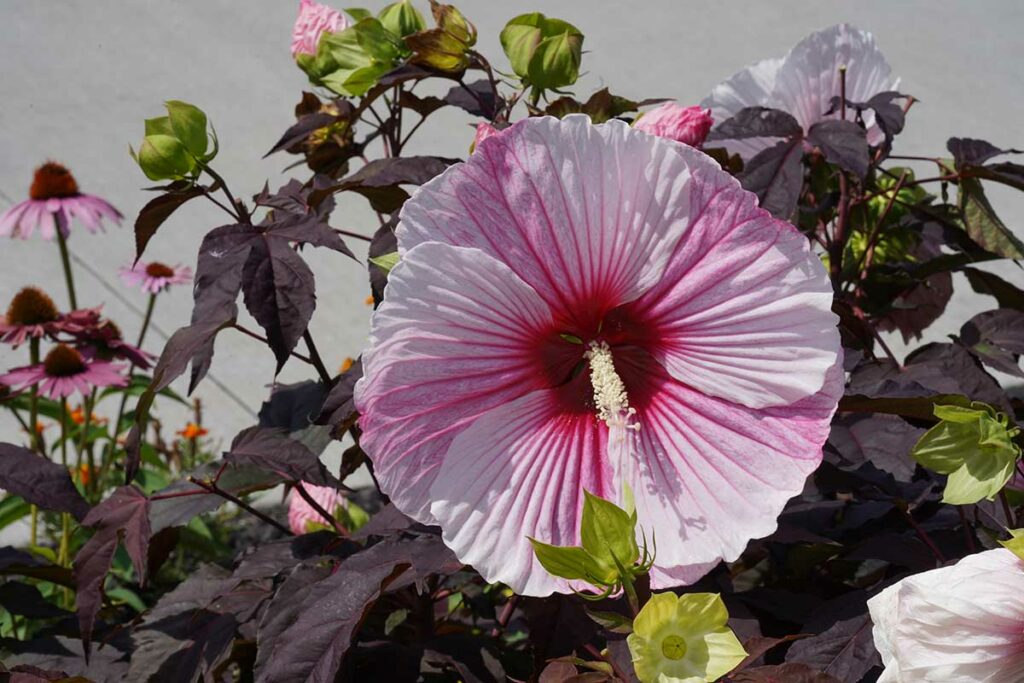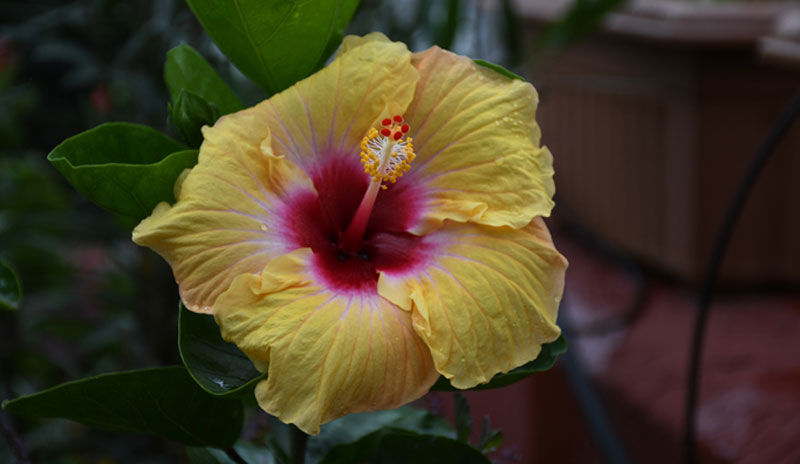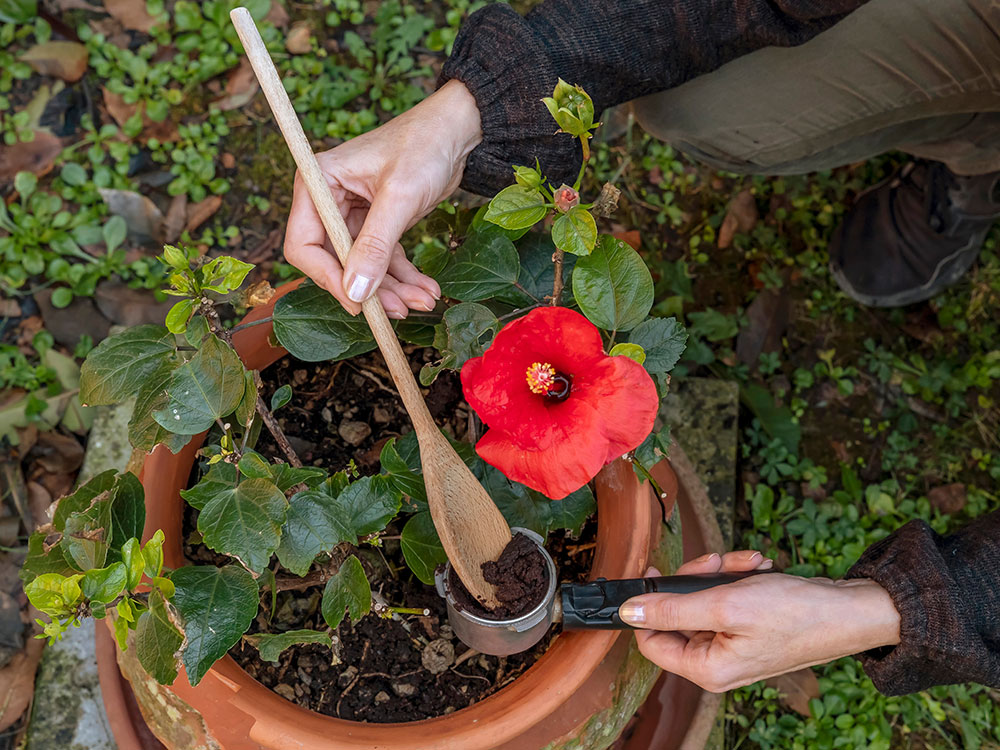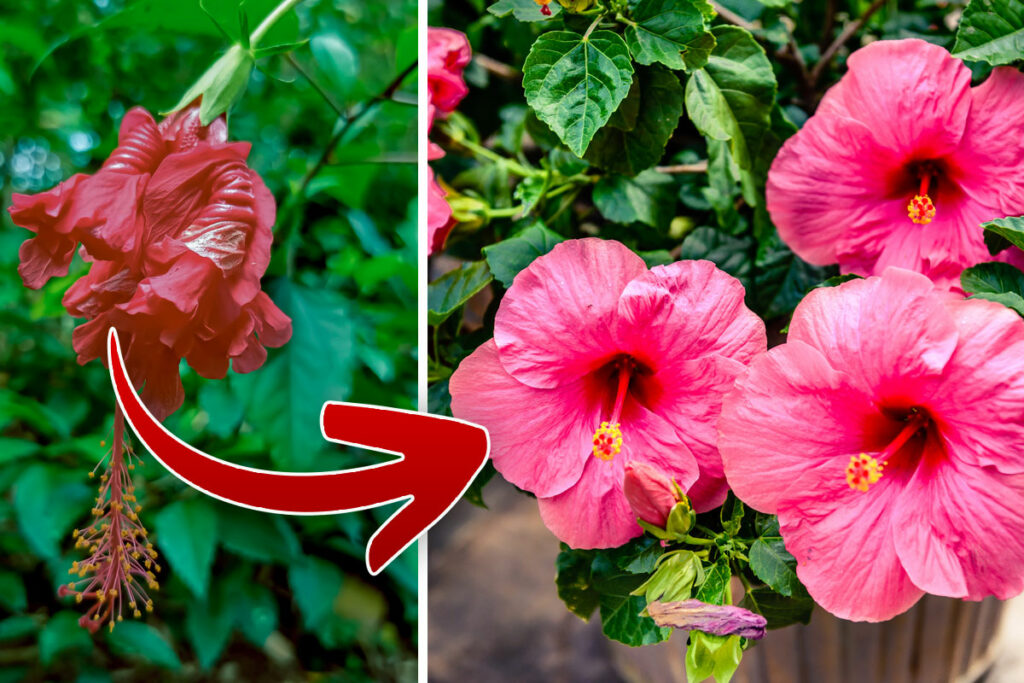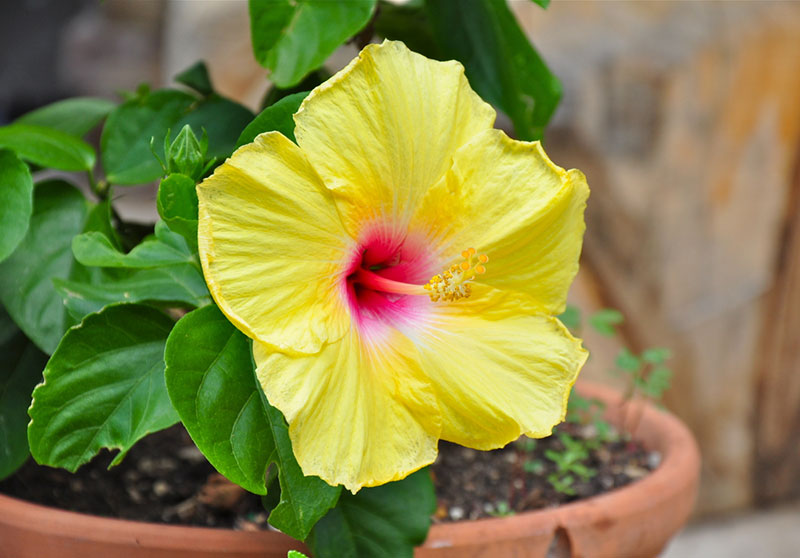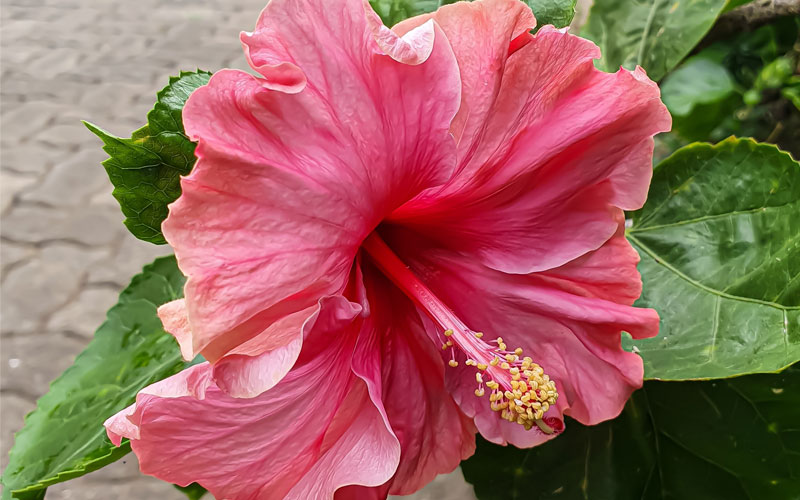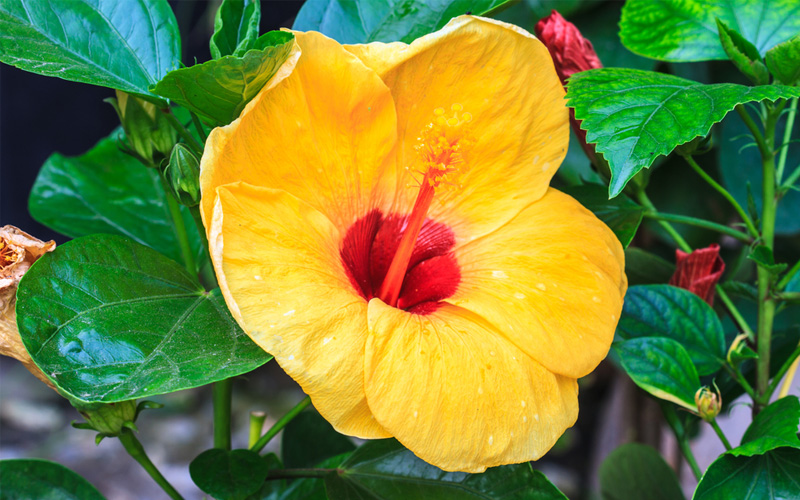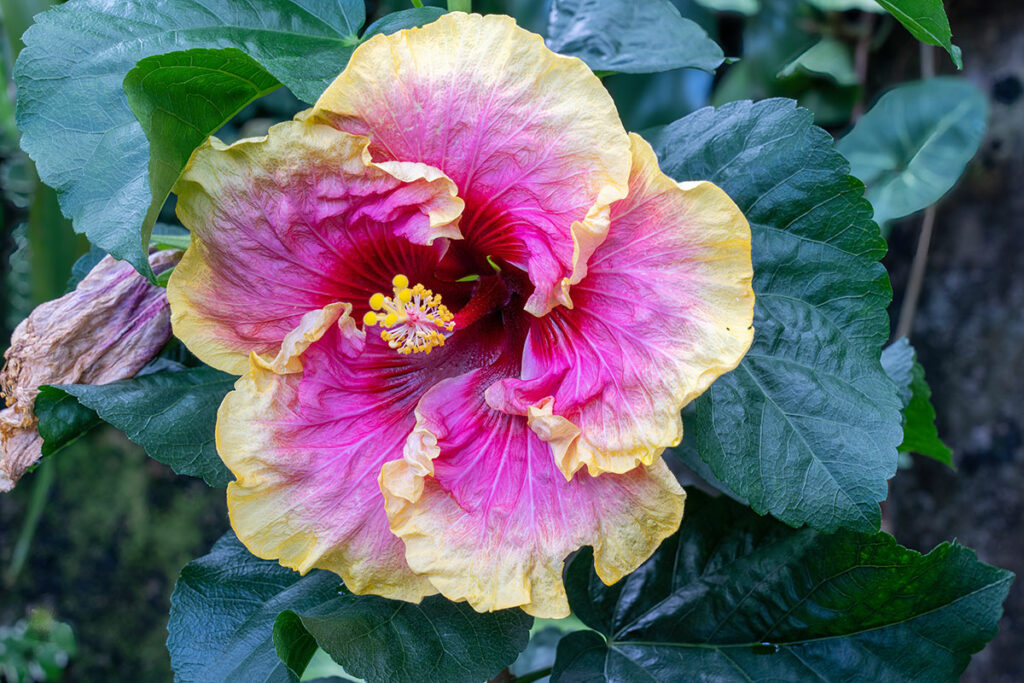Hibiscus is a staple in most gardens thanks to its decorative, trumpet-like flowers. Although beautiful, the former plant alone won’t give you the desired tropical-inspired garden scape look.
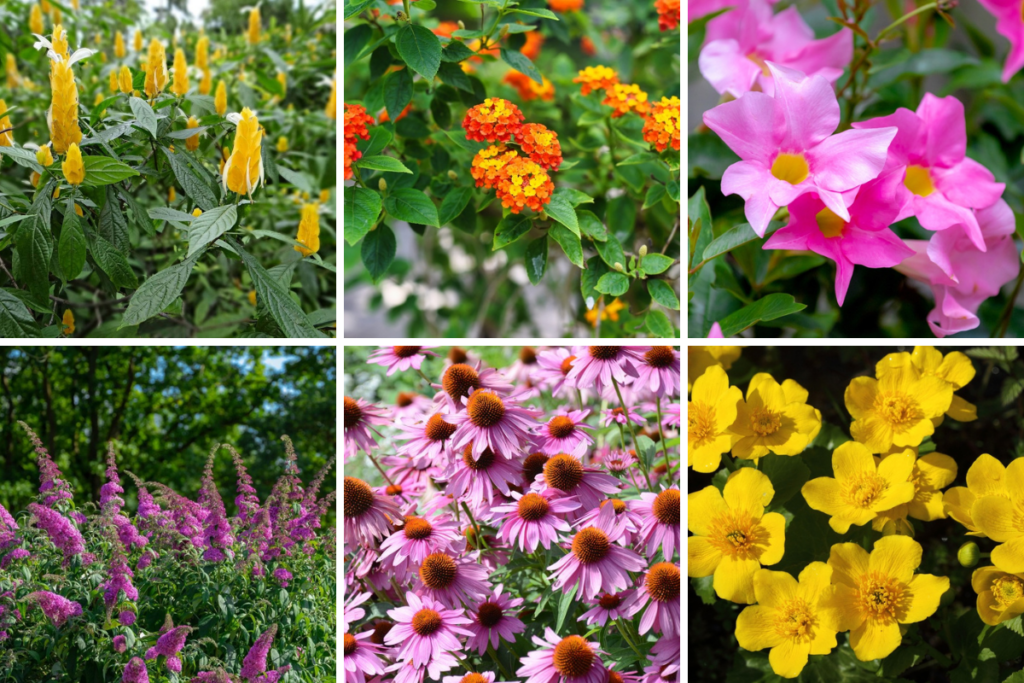
Other flowering plants should go into the mix to transform your backyard.
The question is this: what to plant with hibiscus? The short answer is to choose plants with similar cultural needs.
In this article, we’ll discuss 10 hibiscus companion plants, describing their ornamental features and growing conditions. So, stick around for all the details!
1. Shrimp Plant
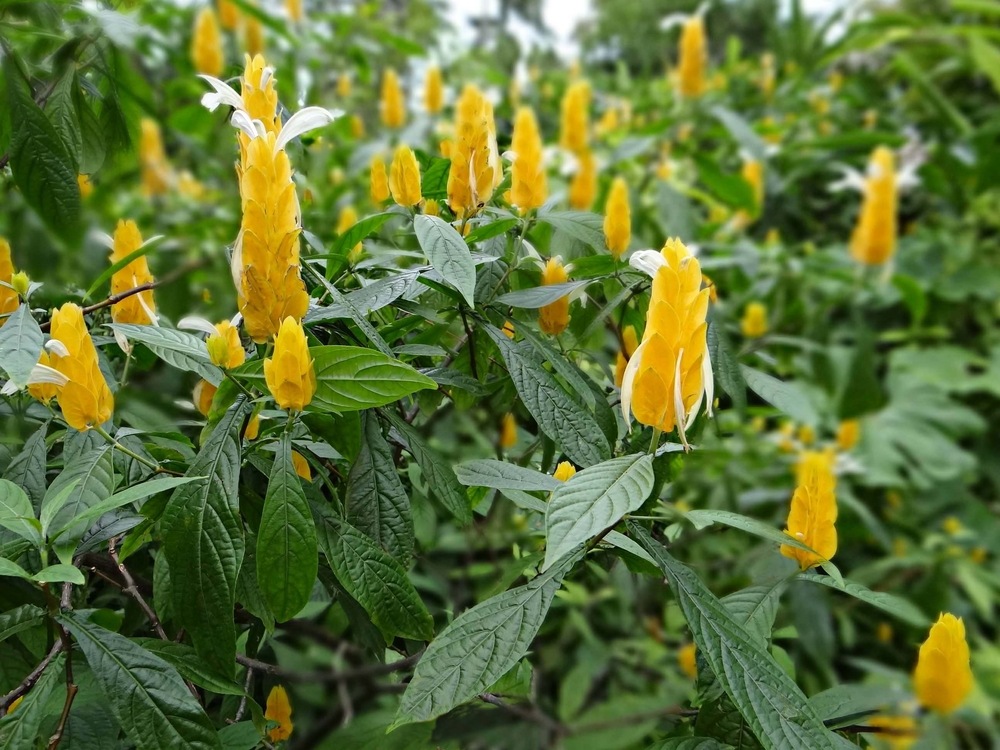
The shrimp plant, scientifically known as Justicia brandegeana, is an annual evergreen shrub.
Native to Mexico, this exotic plant grows well in tropical climates, thriving in hardiness zones 10-11. So, they make great companion plants for tropical hibiscus varieties, like the shoeblack plant (Hibiscus rosa-sinensis).
Typically, shrimp plants reach 3-6 feet tall at maturity and spread about 3 feet wide. They have downy stems and ovate leaves. As for foliage, it grows in clusters and is generally variegated.
Justicia brandegeana varieties bloom in the spring and summer. They first emerge from the bracts and grow into long, thin tubular flowers with white, red, pink, and yellow colors.
Accompanying the blossoms are numerous reddish-brown leaflets, giving the flowers a shrimp-like shape.
To care for shrimp plants, simply expose them to full sun and partial shade—avoid mid-day sunlight. Like hibiscus, plant them in well-draining, moist, and slightly acidic soil. Additionally, feed them slow-release fertilizer during the growing season.
2. Daylilies
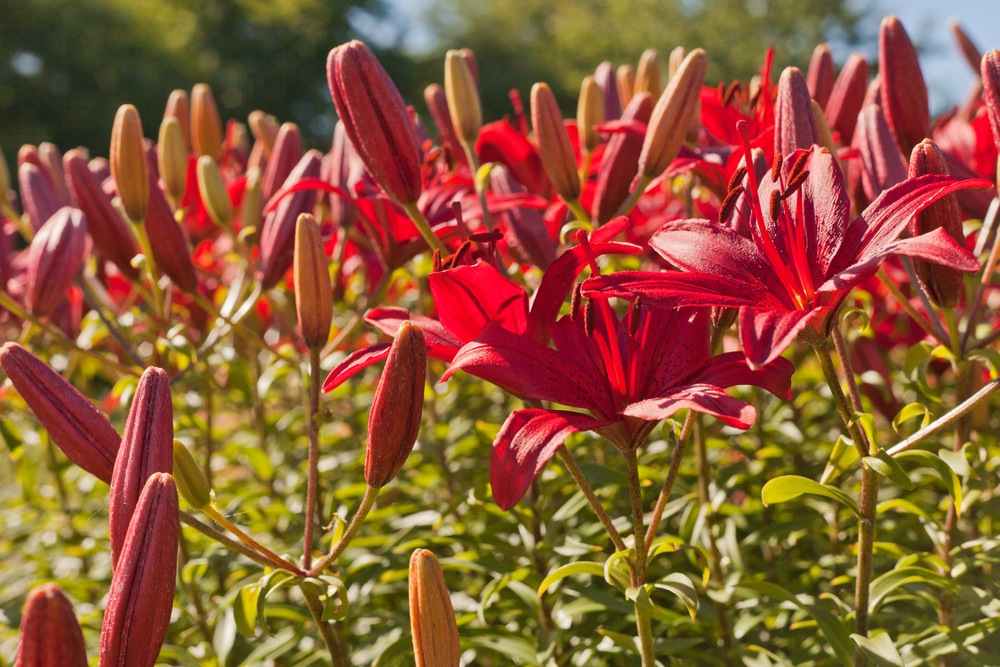
Despite the common name, daylilies, also known as Hemerocallis, aren’t true lilies. The former are perennial plants native to Asia and Central Europe. They grow well in hardiness zones 3-10, reaching a mature height of 4 feet.
From the previous, you can see that daylilies tolerate a wide range of climates and growing conditions. Consequently, you can plant them with tropical or hardy hibiscus shrubs.
As the name implies, daylilies’ flowers only last for a day. They typically open in the early morning and wither away during the night of the following day. Some species replace the fallen flowers with another bloom the next day.
Those lily-like plants bloom from early spring to late summer, producing colorful, fragrant flowers. They thrive best in full sun but tolerate partial shade. Additionally, they prefer fertile, moist, loamy soil.
3. Lantana

The Lantana genus contains heat-loving plants native to the tropical regions of the Americas and Africa. For that reason, they thrive in hardiness zones 7-11.
Those tropical plants typically reach a mature size of 6 feet wide. They have vine-like, woody branches, a quality that makes them perfect for growing in hanging baskets or as ground covers.
In frost-free climates, Lantana plants bloom throughout the year and produce colorful flower clusters with shades like red, orange, blue, and yellow. Those bright colors add a cheerful contrast to the deep hues of the hibiscus.
Lantana plants thrive in full sun, so ensure they receive at least 6 hours of direct sunlight daily. They also prefer moist, well-draining soil with a neutral pH.
4. Purple Coneflower
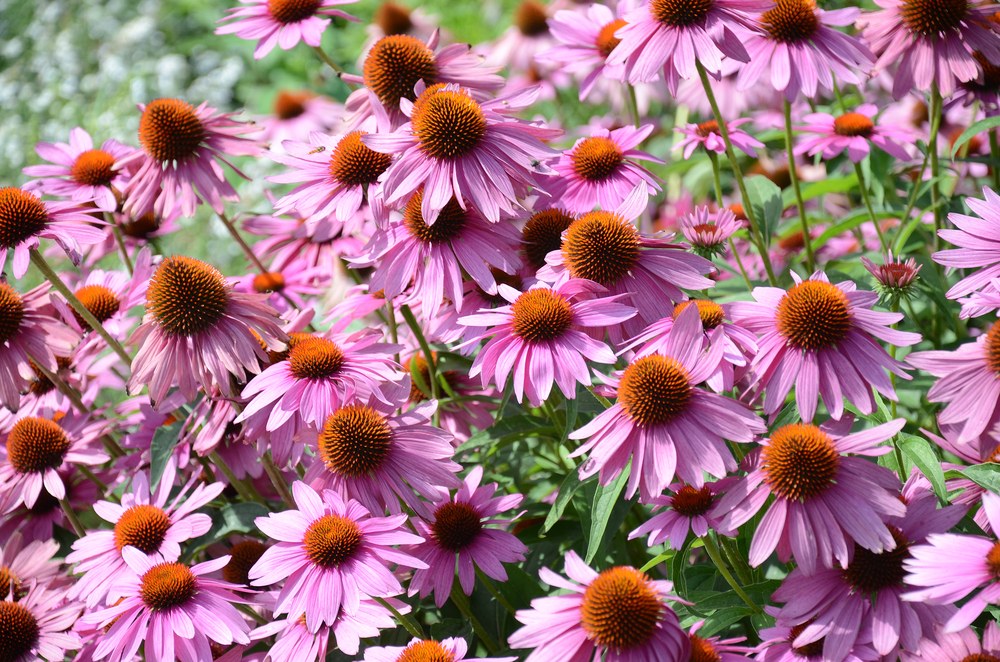
Purple coneflowers, or Echinacea purpurea, are one of the most popular varieties of cornflower plants. Those herbaceous flowering plants belong to the daisy family.
Native to eastern and central North America, purple coneflowers grow well in hardiness zones 3-8. As a result, they make great companion plants for hardy hibiscus.
Typically, purple coneflowers reach a mature size of 3-10 feet. They bloom in the summer, fall, or throughout the year in warm climates. Flowers of those plant species resemble daisies. The large blossoms have a dark purple center and pink, lavender, or purple outer petals.
Growing purple coneflowers doesn’t take much effort, as they can thrive in various soil types. Simply expose those plants to 6-8 hours of direct light to ensure flowering. Purple coneflowers are drought-tolerant and don’t do well in soggy soil, so make sure not to overwater them.
5. Crepe Myrtle
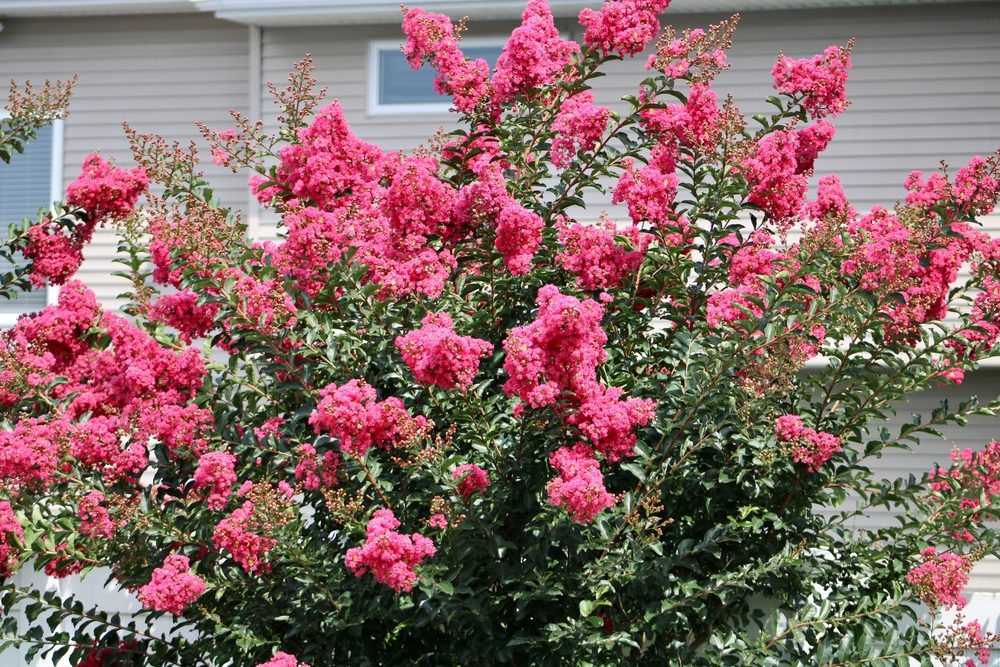
Unlike the above plants, crepe myrtles (Lagerstroemia indica) are flowering trees. They’re native to the Indian subcontinent and Southeast Asia. They can grow in USDA hardiness zones 6-9, making them a great companion for tropical hibiscus.
At maturity, the flowering tree reaches 6 to 30 feet tall. Since they’re small trees, crepe myrtles are perfect for adding height and texture to your hibiscus garden.
Another great characteristic of crepe myrtles is that they bloom from July to September, the hottest summer months, unlike most trees. They produce pink or burgundy flowers with irregular shapes.
Crepe myrtles can grow in almost any soil type, including sand, loam, or clay. However, they prefer moist, well-drained soil. Additionally, they thrive in full sun, so ensure they receive at least 6 hours of direct sunlight.
6. Mandevilla
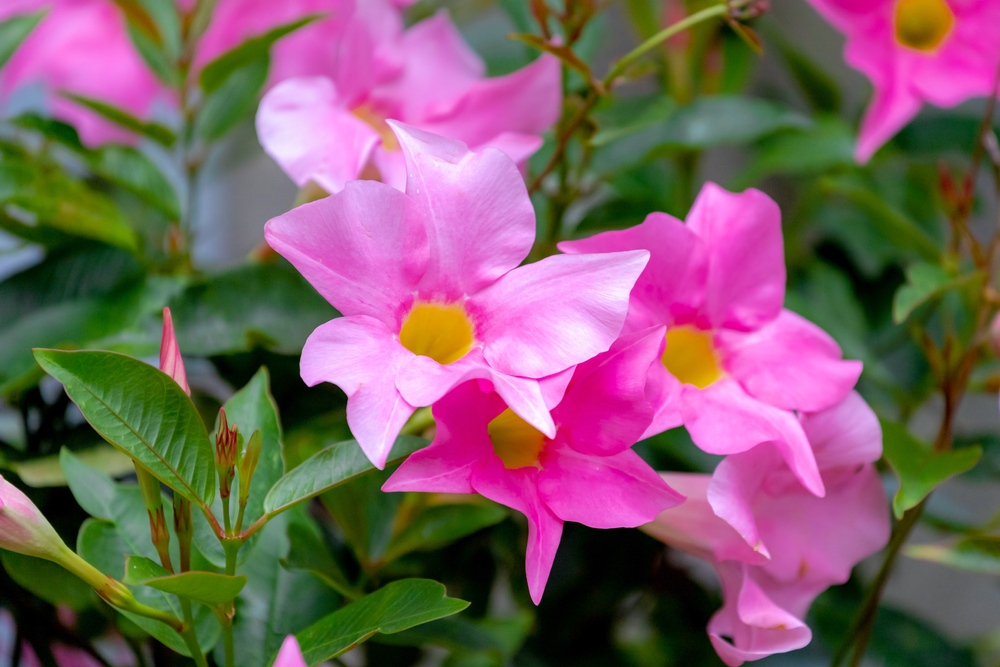
Mandevilla, or rocktrumpet, plants are tropical flowering vines. They make excellent companion plants if you’re growing hibiscus on a trellis or other support structure.
Rocktrumpet plants are native to Central and South America. They grow best in hardiness zones 10-11, thriving in warm climates.
The climbing plants reach a height of 3-10 feet at maturity and bloom in the summer and fall, producing breathtaking trumpet-like flowers. The blossoms come in a variety of colors, including white, pink, red, and yellow.
Mandevilla plants thrive in full sun and well-draining, sandy soil with lots of organic matter. They also prefer moisture but can withstand some dryness. If you live in a dry area, make sure to mist the plants to keep the humidity level high.
7. Marsh Marigold
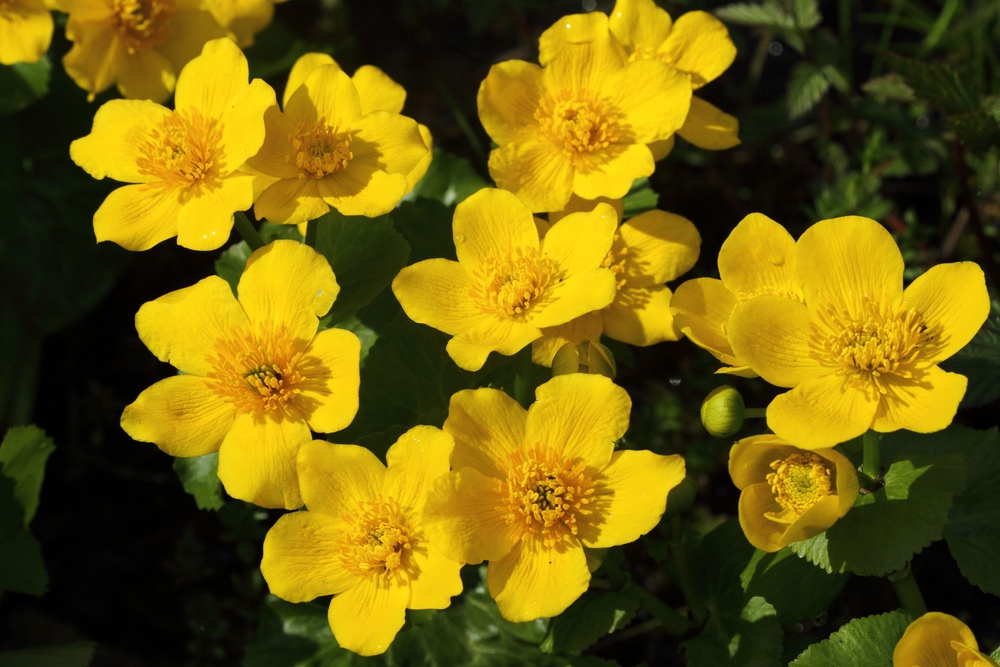
Despite its name, the marsh marigold (Caltha palustris) belongs to the buttercup family and isn’t a true marigold. The former herbaceous plant is native to the woodlands of the Northern Hemisphere’s temperate regions. Consequently, they thrive in zones 3-7.
Marsh marigolds aren’t big plants; they reach a mature height of 1-2 feet. The foliage of those perennial herbaceous plants’ has a rosette arrangement. As for the flowers, marsh marigolds typically bloom in the spring, producing vibrant pink, white, or yellow blossoms.
Those buttercup-like perennials are water-loving plants. So, they flourish in moist, rich, acidic soil. They also prefer full sun to partial shade, especially in hot climates.
8. Sweet Alyssum
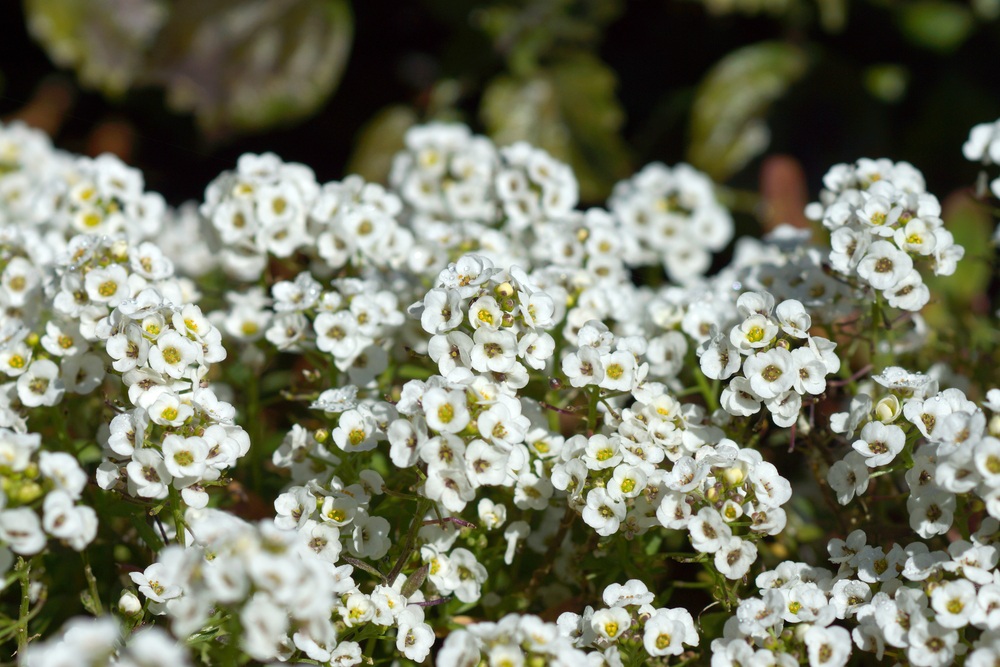
Sweet alyssum plants, or Lobularia maritima, are slow-flowering herbaceous plants native to Europe. They make a perfect pair with hardy hibiscus plants as they thrive in hardiness zones 5-9.
At maturity, those flowering perennials reach a height of 3-10 feet. Sweet alyssum’s stem contains numerous branches that carry dense clusters of small flowers and hairy, oval leaves. Petal shades can be white, pink, or purple. Typically, the flowers bloom in the spring and fall when the weather is cool.
Like hibiscus, sweet alyssum thrives in full sun and moist soil. They can tolerate cold climates but not dry weather.
9. Butterfly Bush
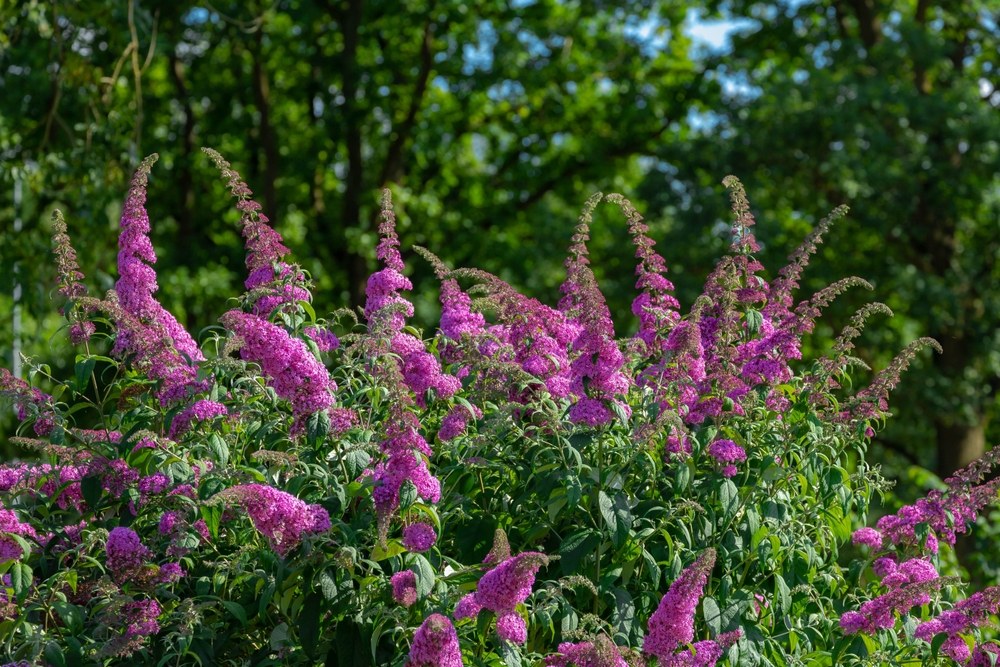
Butterfly bushes are flowering shrubs native to Asia and can be cultivated in hardiness zones 5-9.
Typically, those shrubs grow up to 3-12 feet long. They also spread between 3-8 feet, making them ideal for filling around hibiscus plants.
Butterfly bushes bloom in the summer and can re-bloom in the fall. They produce honey-scented lilac flowers that are usually purple. However, the blooms can have other hues, like pink, blue, white, and yellow.
Growing those flowering shrubs is simple, as they tolerate harsh conditions. However, they prefer moist, well-draining soil and full sunlight exposure. Additionally, spread compost over the roots during the growing season to provide adequate nutrients.
10. Sweet Potato Vine
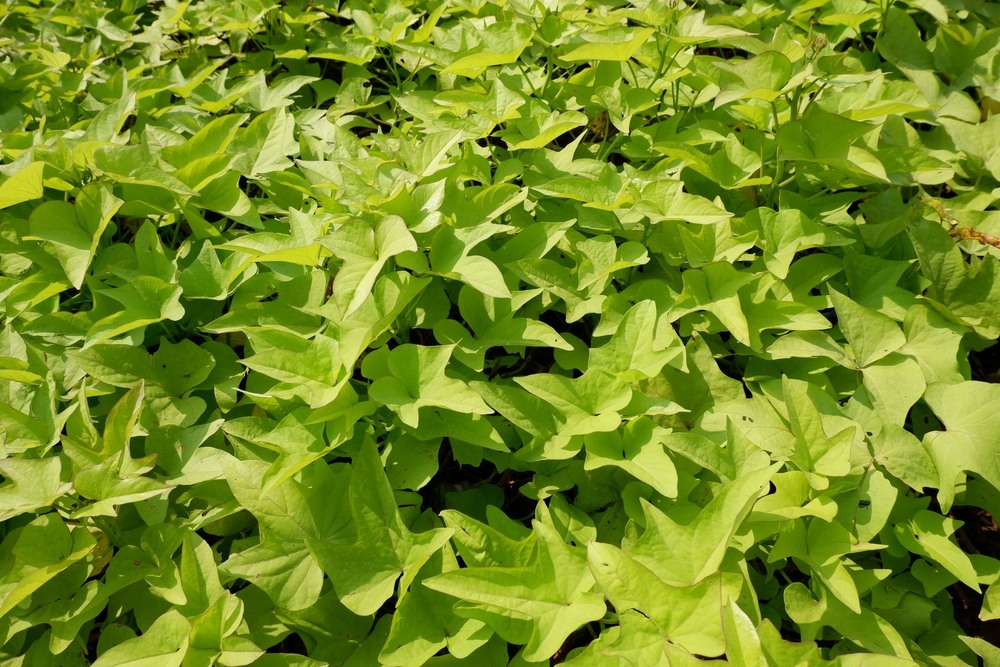
Instead of flowering plants, you can also plant ornamental green vines, like sweet potato vines, as companion plants to hibiscus. The former are fast-growing perennials that make great groundcover in your garden.
Native to the tropical regions of the Americas, sweet potato vines grow well in hardiness zones 9-11. They typically grow 8-10 feet long and spread 5-12 inches wide. Sweet potato vines produce triangle-shaped leaves that can be lobed. The foliage follows an alternate arrangement.
These fast-growing vines rarely flower, but they can produce purple blooms in the spring or summer. While they thrive in full sun, sweet potato vines can tolerate partial or complete shade. They also prefer moist, well-drained soil rich in organic matter. Plus, they don’t need high humidity to flourish.





